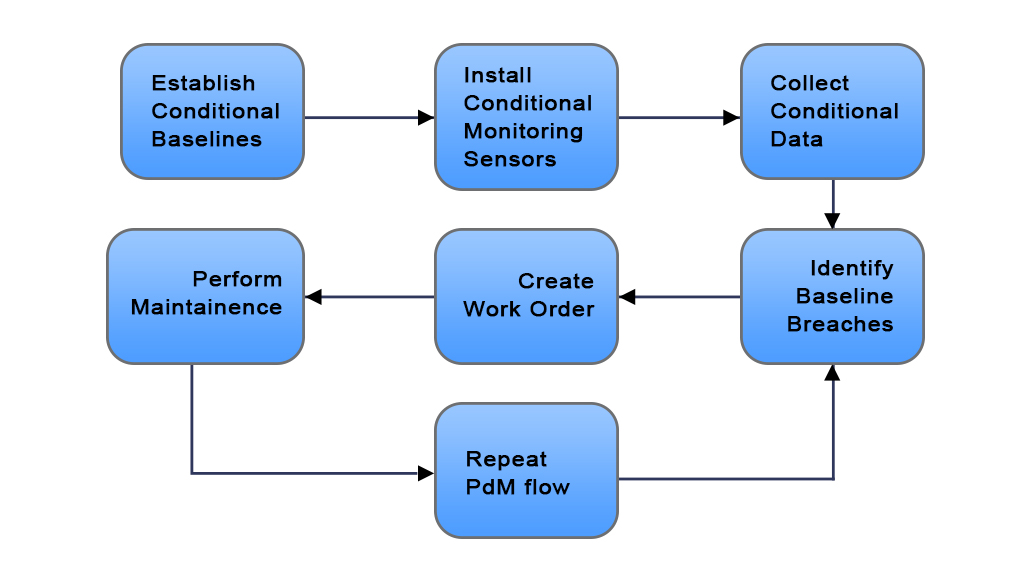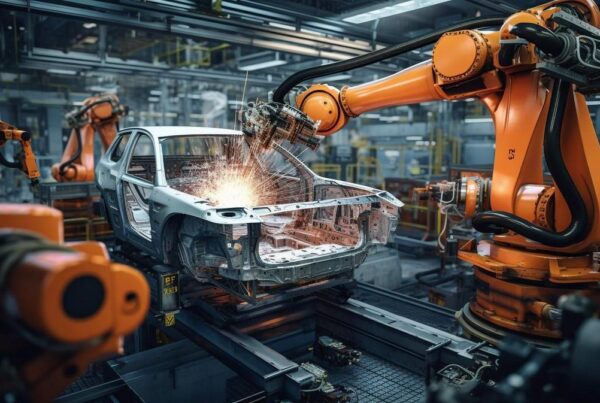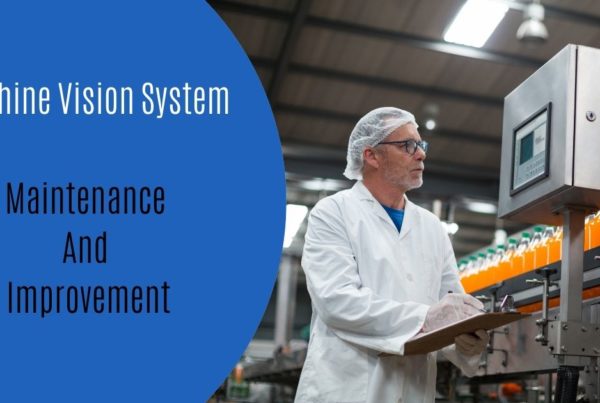
Introduction to Predictive Maintenance
Are you worried about huge maintenance costs and high maintenance frequency eating up your profits? Do you often witness unprecedented breakdowns that incur substantial time and resources? If you nod in silent agreement, then predictive maintenance might be a plausible and effective solution to your worries.
What is meant by predictive maintenance?
Predictive maintenance (PdM) is a kind of condition-based maintenance that continually monitors the performance and condition of assets using sensor devices. These devices supply data in real-time, to predict and prevent any imminent failures. The ultimate purpose of predictive maintenance is to predict when the equipment might break down, followed by preventing the failure through regularly scheduled and corrective maintenance. This ensures that the maintenance frequency is as low as possible, without incurring high maintenance costs.

Also, Read Understanding Camera Sensors for Machine Vision Applications
IBM – In predictive maintenance, you look for patterns in the usage and environmental information for equipment that correlate with failures that take place. This information is used to create predictive models to score incoming new data
Advantages of Predictive Maintenance
Some of the most prominent benefits of predictive maintenance are the following:
- Reduced downtime and longer life
Asset failures can be quite stressful and expensive. Predictive maintenance can predict issues, reducing downtime. A PWC report claims that PdM enhances uptime by 9% and extends the lifetime of aging assets by 20%.
- Reduced maintenance costs
Since planned maintenance is carried out based on a schedule, there might be instances when maintenance is carried out even when it is not required. Predictive maintenance eliminates such inefficiencies. From the symptoms interpreted from the data, technicians can focus on only the necessary equipment, saving costs and time.
- Improved safety
Predictive maintenance can help reduce workplace accidents by alerting the maintenance teams regarding any imminent equipment failures. According to PWC, predictive maintenance in manufacturing can reduce safety, health, and environmental risks by 14%.
- Enhanced productivity
If equipment breaks down during a critical operation, the entire workflow gets disrupted. Discontinuity in operations and the forthcoming repairs can take away valuable time and resources. By preventing any unprecedented equipment breakdowns, predictive maintenance ensures operational continuity and seamless workflows.
Also, Read Automation Trends to Watch in 2021
Disadvantages of Predictive Maintenance
Despite its vast set of advantages that provide a considerable impetus to some companies’ net throughput, predictive maintenance comes with its own challenges. A few of such challenges that make it unsuitable for some companies are:
- Scheduling takes time
It takes a considerable amount of time to plan and implement a PdM schedule.
- Additional costs
Given the complex nature of predictive maintenance, plant personnel needs to be trained on using the equipment and interpreting the analytics. It also involves investment in maintenance tools and systems. Tersely, condition monitoring has a high upfront cost.
Applications of Predictive Maintenance
Predictive maintenance can find application in all industries where machines produce significant amounts of data and where data analysis can support maintenance and fine-tuning. Mentioned below are some industries where PdM is already gaining prominence are the following:
- Automotive
In an industry that relies heavily on production and assembling, equipment failure can result in disruption and might incur the company millions. It is no surprise that the automotive industry will embrace PdM technology that reduces downtime and ensures continuous and efficient workflows.
- Transportation
Airlines have to consistently, closely monitor sensor data from the airplanes’ complex equipment. Proper functioning of equipment is of paramount importance to ensure passengers’ safety. Complex machinery present in trains can also benefit from predictive maintenance.
- Oil & Gas
The Oil & Gas industry utilizes costly equipment in extraction and refining processes that can lead to health and environmental hazards in case of failure.
- Ports
Since port equipment is continuously exposed to harsh conditions, their conditions deteriorate quickly. For example, cranes are crucial tools but are prone to failure. Crane downtime can lead to more waiting time for ships and lower throughput for ports. Reducing downtime can play a critical role in enhancing service quality and minimizing waste.
Also, Read Effects Of Augmented Reality Startups On The Logistics Industry
Is predictive maintenance suitable for your organization?
Raghava Says – By maximizing the equipment’s reliability and minimizing the maintenance frequency, predictive maintenance can lead to substantial cost savings. These cost savings, however, come at a price. Some condition monitoring techniques and equipment are costly and require expert personnel for data analysis to be useful. Therefore, it should also be predetermined if predictive maintenance is plausible for the concerned application. PdM is not suitable for applications that do not serve a critical function and don’t have a failure mode which might be cost-effectively predicted.
How to implement predictive maintenance?
Some critical steps to be followed before implementing predictive maintenance are:
- Analyzing the need and ROI cases.
- Establishing definitions, realistic expectations, and building a case for PdM.
- Educating the major stakeholders and training the maintenance staff and machine operators.
- Complete an equipment inventory and assess the current conditions.
- Affix relevant sensors and IIoT devices to the asset under consideration.
- Develop a computerized maintenance management system (CMMS) and connect the IIoT devices to it.
- Develop maintenance schedules accordingly.
Conclusion
Predictive maintenance presents you with the best time to work on an asset so that maintenance frequency is minimal and reliability is as high as possible while eliminating unnecessary costs. However, there are few disadvantages to predictive maintenance like high start-up costs and the need for specialized personnel.
Clearly, predictive maintenance is not apt for every company, especially those that have not yet implemented planned maintenance activities. However, larger organizations that have outgrown conventional maintenance practices and have additional budgets should leverage predictive maintenance. Predictive maintenance has been shown to result in a tenfold increase in ROI, 25%-30% reduction in maintenance costs, a 70%-75% decrease in breakdowns, and a 35%-45% reduction in downtime. These statistics are evidence of why predictive maintenance is gaining prominence quickly.
Get In Touch With Us





